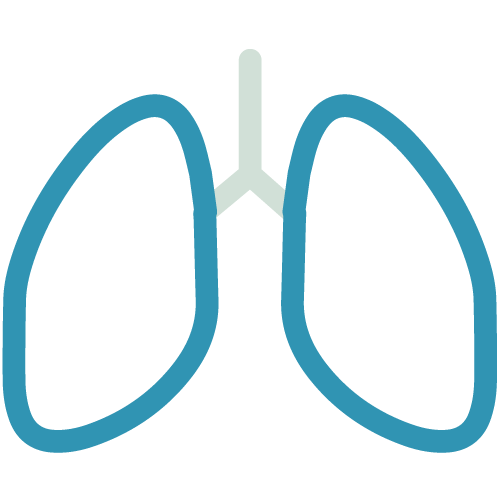Take a Breath
“I really can breathe more easily, which also makes me feel much better.”
A patient of Dr Pallav Shah, Royal Brompton Hospital, London.
The Zephyr Valve is not another medicine, or surgery that requires cutting the skin. It is a procedure during which small valves are inserted into the airways, helping the healthy parts of the lungs to expand, thus reducing pressure on the diaphragm and making it easier for you to breathe.
The Zephyr Valve Procedure
If your doctor decides that you could be a good candidate for the Zephyr Valve, you will be referred to a specialised treatment centre near you. They will run some tests to see whether you qualify for the treatment. If you can have the Zephyr Valves inserted, the procedure is as follows:

Step 1
The doctor gives you a sedative to relax you.

Step 1
The doctor gives you a sedative to relax you.
Step 2
A small tube with a camera, called a bronchoscope, is inserted into your lungs via your nose or mouth.


Step 2
A small tube with a camera, called a bronchoscope, is inserted into your lungs via your nose or mouth.

Step 3
In a procedure lasting 30 to 60 minutes, about four Zephyr Valves are inserted into the airways.

Step 3
In a procedure lasting 30 to 60 minutes, about four Zephyr Valves are inserted into the airways.
Step 4
You stay in hospital under observation for at least three nights.


Step 4
You stay in hospital under observation for at least three nights.

Step 5
After the procedure you keep taking the medication that your doctor has prescribed for your condition.

Step 5
After the procedure you keep taking the medication that your doctor has prescribed for your condition.
What are the benefits of the Zephyr Valve?
The benefits of the Zephyr Valve have been clinically proven in several clinical studies.2-6 In the current LIBERATE Study1 after one year, patients treated with the Zephyr Valve – compared to patients who received medication alone – experienced the following benefits:

breathing more easily due to improved lung function

more physically activity and covering longer distances

more everyday activities such as going for a walk, taking a bath and gardening

enjoying a better quality of life with more energy

feeling more confident when leaving the house
Who can have the treatment?
The Zephyr Valve is suitable for patients who have breathing problems due to emphysema. All other treatment options, such as medication, should have been tried first.
Before you can be treated, your doctor will check whether a part of your lungs is suitable for the Zephyr Valve procedure.
What risks are associated with the treatment?
All medical devices have benefits and risks. Possible complications associated with the Zephyr Valve include pneumothorax, worsening COPD symptoms, coughing up blood (haemoptysis), pneumonia, breathlessness (dyspnoea) and, in rare cases, death. Ahead of treatment, your doctor will give you detailed information about the possible complications and risks and how often they occur, to help you understand these better.
Who cannot have the treatment?
The treatment is not suitable for you if:
- you cannot have a bronchoscopy
- you have an active lung infection
- you are allergic to nitinol, nickel, titanium or silicon
- you have not stopped smoking
Contact Form
Why is NICE – an independent public body that provides national guidance and advice – recommending the Zephyr Valve treatment?
The National Institute for Health and Care Excellence (NICE) aims to improve outcomes for people using the NHS and public health and social care services. The Zephyr Valve is aligned with their guidance and therefore recommended as a standard of care.7
